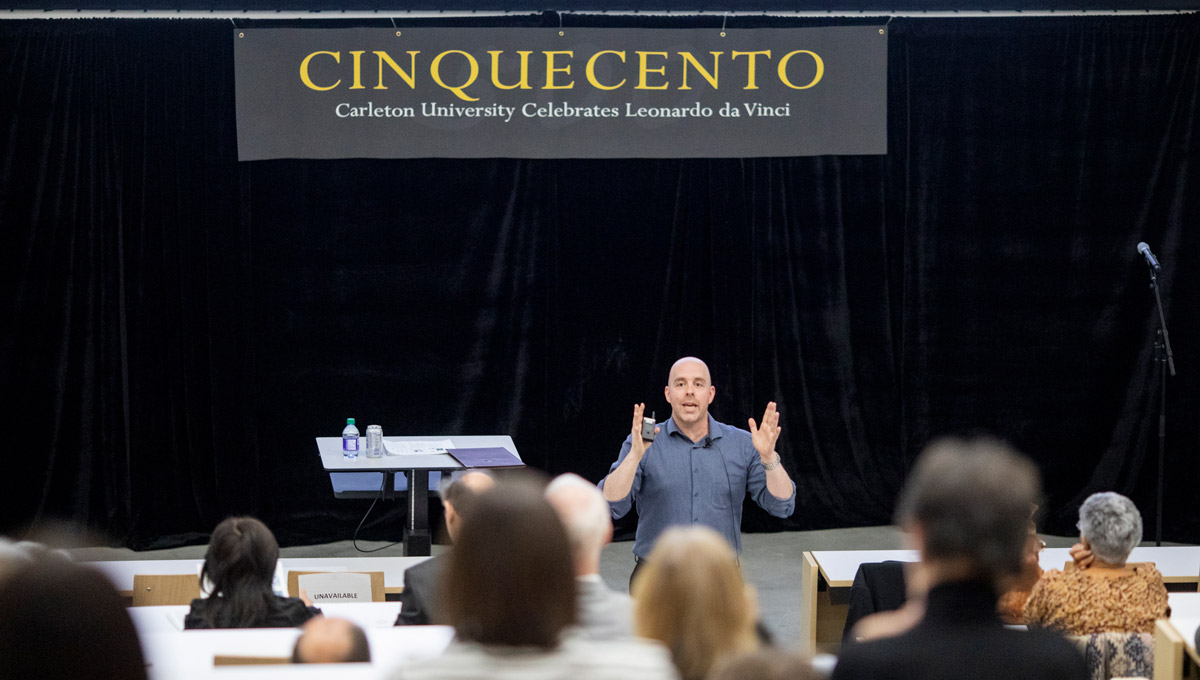
Photos by Rob Lloyd
When we look at a black-and-white image of several outlined circles with varying degrees and placement of shading inside their rings, some of the circles will look like bumps, while others will look like holes, despite the fact that they’re on a flat piece of paper.
That’s because we assume that light comes from above and use shadows to interpret 3D shapes and depth.
“The brain has learned that light comes from above, because for millions of years the sun has come from above,” Carleton University President Benoit-Antoine Bacon said during “da Vinci’s Vision: The Beauty (and Limitations) of Painting a 3D World,” a lecture he gave on May 8, 2019 as part of the university’s year-long series of events to explore lesser-known aspects of Leonardo da Vinci’s life.
Cultural and Artistic Flourishing
Carleton’s da Vinci celebration — marking the 500th anniversary of Leonardo’s death — has been dubbed “Cinquecento,” an Italian term for the cultural and artistic flourishing of the 16th century.
Thanks to his understanding of science and engineering, da Vinci knew how to use shadows, as well as techniques such as occlusion, familiar and relative height, atmospheric perspective and linear perspective to bring depth to his paintings, said Bacon, whose talk drew from his background in cognitive neuroscience research. He focused on the links between brain activity and perception in the visual and auditory systems, as well as on multi-sensory integration.
“The magnificent paintings of Leonardo da Vinci and other artists of the Renaissance are characterized by a dramatic increase in realism and in particular by their remarkably vivid 3D representation of the world,” declared Bacon’s abstract. “Indeed, whereas pre-Renaissance art was iconographic and ‘flat,’ a number of techniques increasingly brought 3D accuracy and fullness to paintings.”
Showing a slide of da Vinci’s “The Mona Lisa” on the screen in the Health Sciences Building’s large lecture hall, Bacon pointed out the artist’s use of shadows “highlighting the roundness of the face and framing that famous smile.
Read the full story by Dan Rubinstein at newsroom.carleton.ca